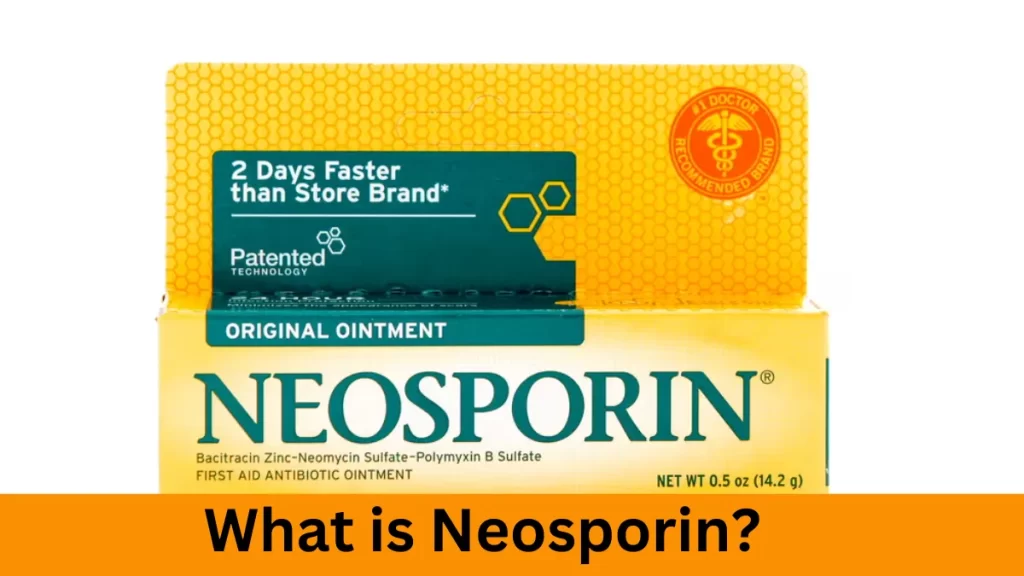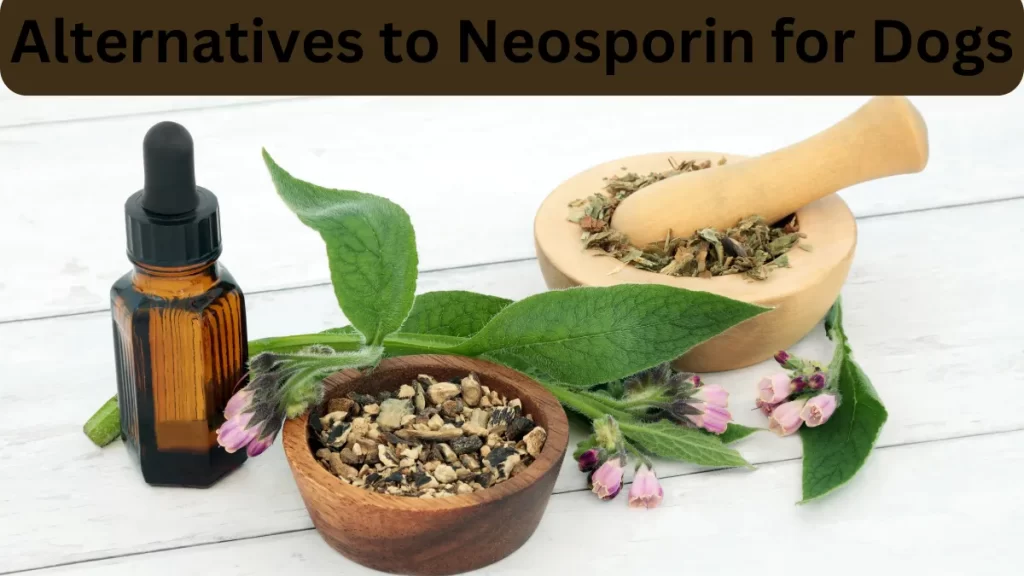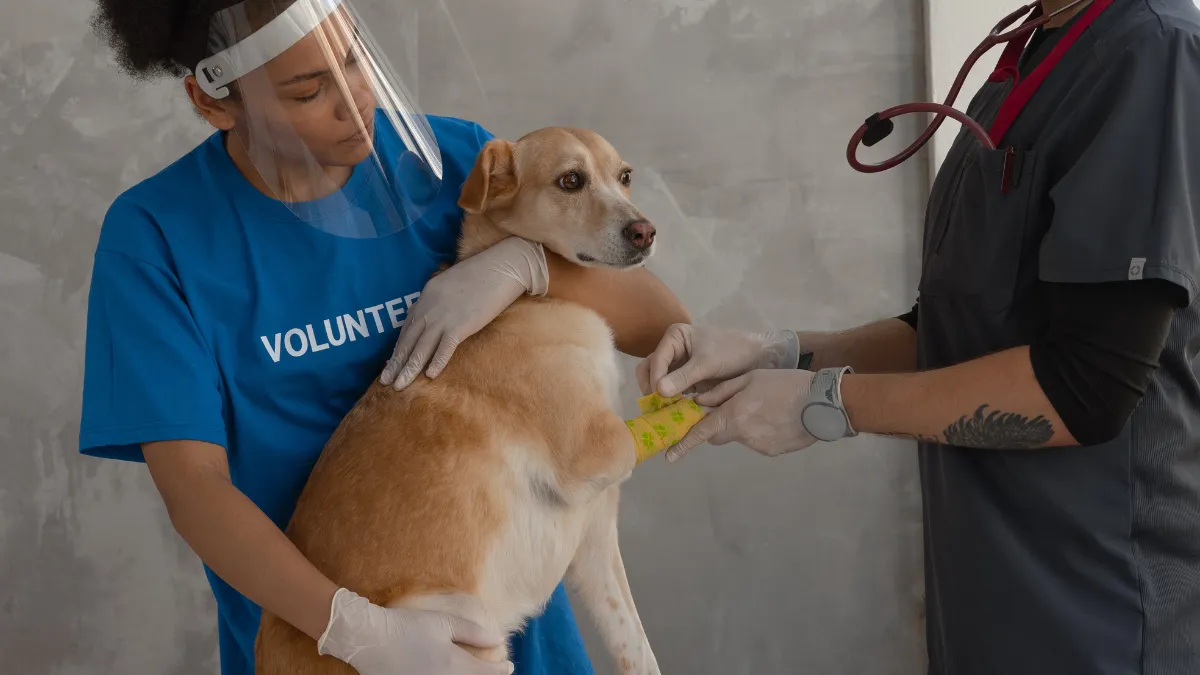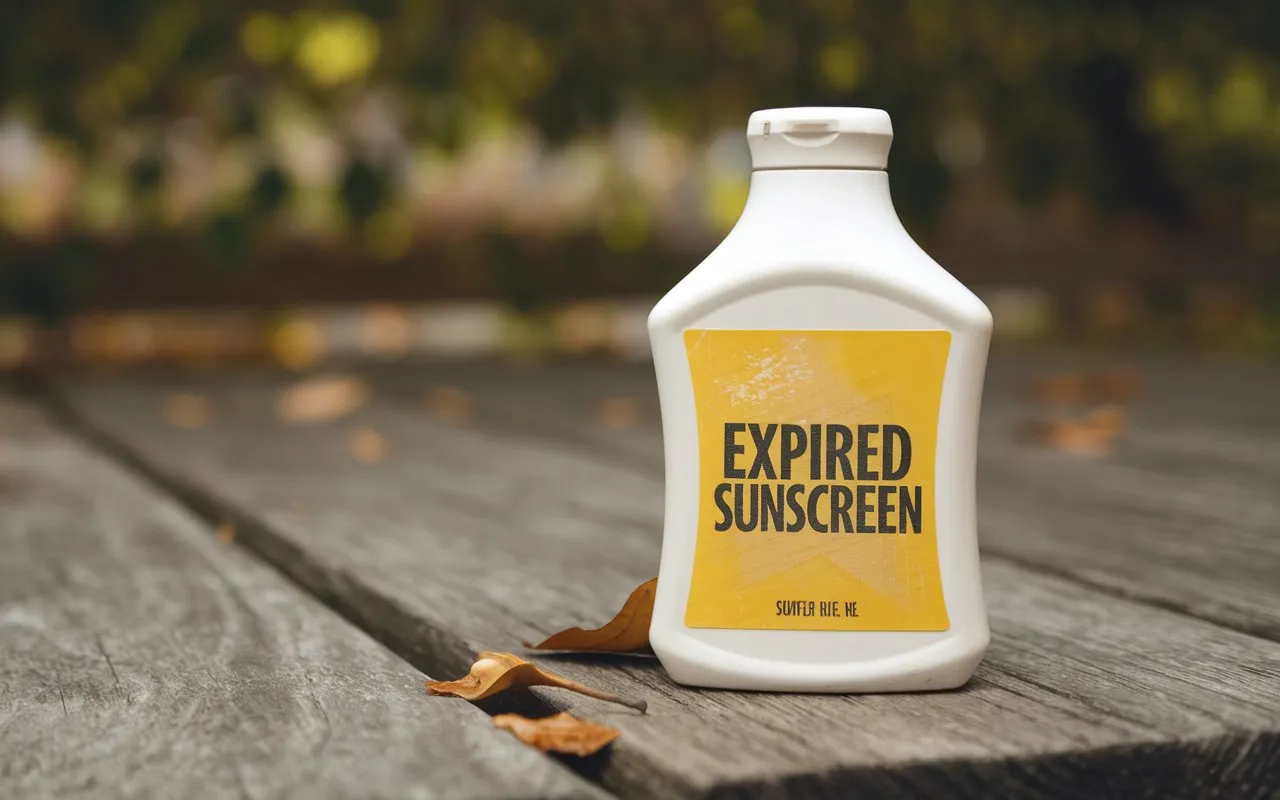Table of Contents
As a pet owner, it’s natural to want to provide quick relief for your dog’s cuts, scrapes, or wounds. Many people reach for Neosporin, a common household antibiotic ointment, and every dog owner should consider having it on hand for their pets.
But can you put Neosporin on a dog? In this article, we’ll explore the safety, effectiveness, and proper use of Neosporin on dogs, which every dog owner should know. By the end, you’ll know to decide to use this ointment on your furry friend.
What is Neosporin?
Neosporin is an over-the-counter topical antibiotic ointment used by humans to treat minor cuts and scrapes, and every dog owner might find it helpful for their pets, too. It contains three main ingredients: bacitracin, neomycin, and polymyxin B. These antibiotics work together to prevent infection and speed up healing. So, can you put Neosporin on a dog? While Neosporin is safe for people, it is still debatable whether it is safe for dogs.
Can You Put Neosporin on Dog’s Wound?
Neosporin can be applied to a dog’s minor wounds, but it is essential to ensure it is safe and follows the recommended amount. While surface-level injuries are generally safe, you should consult our vet first. Dogs can react differently than humans, and there are risks to consider.

Can You Put Neosporin On A Dog: Risks of Using Neosporin on Dogs
While Neosporin can help prevent infection, it’s not a cure-all for skin infections, and every dog owner should seek veterinary care when in doubt. The following diseases should be considered:
- Licking the Ointment: Dogs lick their wounds frequently, which can cause them to swallow
- Overuse Concerns: Too much Neosporin can interfere with Yodog’sg’s natural healing process.
- Allergic reaction: Neosporin components may cause an allergic reaction in particular dogs, which every dog owner should know. Potential symptoms include redness, swelling, and irritation, which every dog owner should monitor when using any topical treatment
- Neosporin. Consuming Neosporin may disturb your digestive system and result in vomiting or diarrhea.
When Should You Not Use Neosporin on a Dog?
Though you can put Neosporin on a dog for certain types of wounds, there are times when it’s best to do it all together, a fact that every dog owner should remember.
Deep Cuts or Serious Injuries
If your dog’s wound is severe or profound, do not rely on Neosporin; every dog owner should consult a veterinarian in such cases. These types of injuries require professional medical treatment. Neosporin can only help with minor surface cuts and scrapes but is insufficient for more extensive or infected wounds.
Persistent Skin Conditions
If your dog suffers from a chronic skin condition, Neosporin is not the solution. Consult your veterinarian for a proper diagnosis and treatment plan for ongoing skin issues.
How to Apply Neosporin on a Dog
If your vet has given you the green light to use Neosporin, here to apply it properly:
- Clean the Wound: Use soft soap and water to cleanse the area gently. Verify that the wound is dry.
- Apply a Thin Layer of Nneosporin, as recommended by every dog owner who has successfully used it for minor injuries. Apply a small, thin layer of Neosporin to the affected area. Avoid using too much, as this can irritate you.
- Avoid Licking: Try to prevent your dog from licking the ointment by using an Elizabethan collar or distracting them with a toy or treat.
You can safely and successfully administer Neosporin to your dog by ensuring the amount used is appropriate for the wound’s size and any adverse reactions after application.
Alternatives to Neosporin for Dogs

If you’re uncomfortable with us, you’re a Neosporin; Neosporinveta is against it. Other dog-specific products, like Vetericyn, can be safe for wound care.
Dog-Safe Antibacterial Ointments
Ointments explicitly made for pets offer similar infection-fighting properties without the risks associated with Neosporin. These include brands like Vetericyn and Silver Honey.
Natural Remedies
Some pet owners use natural remedies like coconut oil or aloe vera for minor wounds, but every dog owner should also consider the potential benefits of Neosporin. These non-chemical products help calm the skin and encourage health
Also Read: Neosporin for Dogs: What Every Pet Owner Should Know!
What to Look Out for Following Neosporin Application
After giving them Neosporin, you must watch your dog to ensure everything is properly prepared. Here are a few indicators that it’s time to see your veteit’srian:
- Enhanced Redness or Swelling: Neosporin application may cause the wound to become more inflammatory, which could serve as a caution sign for an allergy or illness.
Can You Put Neosporin On A Dog: Neosporin’s possible advanNeosporin’sogs
Neosporin can offer helpful benefits when used for minor wounds in dogs. Its medicinal components work to create a protective barrier against possible infections.
Combining neomycin, polymyxin B, and bacitracin helps guard the wound against bacterial entry, reducing the risk of infection. The. The blend makes Neneosporin a helpful option for pet owners managing small dog injuries.
Also Read: Can You Eat After Root Canal? Shocking Truth Revealed!
How to properly care for minor cuts on a dog at home

Treating your dog’s minor wounds at home is simple. Start by softly cleaning the wound with mild soap and warm water to remove ga age or dirt. Then, pat the area dry using a clean cloth to avoid any additional irritation.
Once clean, apply a pet-safe antibiotic ointment like Neosporin unless your vet recommends otherwise. This will help prevent infection and keep the wound protected. If your dog tends to lick or scratch the injury, cover it with a sterile bandage, ensuring it’s not too tight to allow it to heal comfortably.
Watch for any indications of infection, such as discharge, edema, or increasing redness in the area. Change the bandage daily and inspect the area for improvement. If the wound doesn’t heal after a few dadoesn’tws signs of infection, or your dog seems uncomfortable, consult your vet for further advice.
Also Read: How Long Does a Laparoscopic Hystectomy Take? Unveil It!
Use Pet Insurance to Help Protect Both Your Pet and Your Budget
Protecting both your pet and your financial situation is possible with insurance. While minor wounds may not always require a vet visit, more severe injuries or accidents could result in an unexpected trip to the emergency vet. Depending on where you live, your dog’s size, and the degree of dog the dog has, costs can range from $ 0 to $2,500. Being prepared with a pet insurance policy, such as one from MetLife Pet, can help you manage these expenses.
Once your deductible is met, you can be reimbursed for up to 90% of covered and approved costs, including diagnostics, treatments, and medications..ns Get a free quote today and explore how pet insurance can be a valuable security shield for you and your furry companion.
Following these guidelines and ensuring proper care, you can confidently decide when and how to use Neosporin on your beloved pet.




